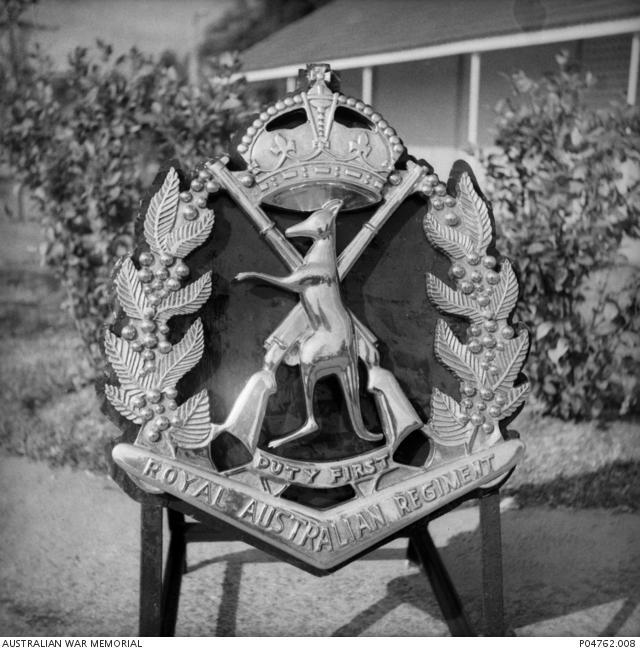Case study: 3rd Battalion, Royal Australian Regiment (3 RAR)

The gate badge of the Royal Australian Regiment outside the 3rd Battalion guardhouse, Malaysia, 1964–65. (G.K. Bradshaw, AWM P04762.008)
3rd Battalion, the Royal Australian Regiment (3 RAR) is a light infantry battalion of the Australian Army. Formed in 1945, 3 RAR served in Japan, Korea, Malaya, Borneo, South Vietnam, Timor-Leste, the Solomon Islands, Iraq, and Afghanistan.
For “fine display of courage and steadfastness”(6) during the Battle of Kapyong in Korea, 3RAR was awarded a United States Presidential Citation. From 1957 to 1959, the battalion gained jungle operations experience through its involvement in the Malayan Emergency. It would be the first RAR unit to return to Malaya when Confrontation commenced.
Once the Australian Government had approved their involvement in Borneo, 3 RAR began patrols and ambushes on both sides of the Indonesian–Malaysian border, and conducted 32 cross-border operations in Borneo, code-named “Claret”.
Details about 3RAR’s role during Confrontation can be uncovered in its unit diaries.
- Study the following photographs depicting some of the work undertaken by 3RAR during Confrontation, and complete the following table (photographs and related information can be access at www.awm.gov.au):
For each picture answer the following:
- What is happening in the photograph?
- What benefit may this task provide to operations during Confrontation?
The majority of these photographs were taken by Defence photographer Warrant Officer Class Two William Cunneen. Cunneen served in Japan, the Korean War, Malayan Emergency, Confrontation, and the Vietnam War. He died in 2016, having provided an important record of the Australian Defence Force in action. The Australian War Memorial holds over a thousand of his photos.
“For 50 years his shutter recorded the actions and sacrifices of legions of Australian servicemen and women.”
Brigadier Adrian D’Hage (retd), 2017 http://www.contactairlandandsea.com/2017/02/08/vale-billy-cunneen/
- Does knowing that the majority of photographs were taken by a person serving in the Defence Force alter your interpretation of them? Why or why not?
- View the short film below and answer the following questions:

- Who made this film?
- Who do you think this film was made for?
- What perspective is being presented?
- What techniques has the film maker used to present the content in a positive way?
References:








